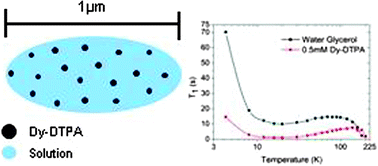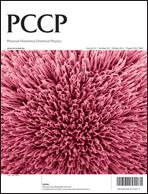Achievement of high nuclear spin polarization using lanthanides as low-temperature NMR relaxation agents
Abstract
Many approaches are now available for achieving high levels of nuclear spin polarization. One of these methods is based on the notion that as the temperature is reduced, the equilibrium nuclear polarization will increase, according to the Boltzmann distribution. The main problem with this approach is the length of time it may take to approach thermal equilibrium at low temperatures, since nuclear relaxation times (characterized by the spin-lattice relaxation time T1) can become very long. Here, we show, by means of relaxation time measurements of frozen solutions, that selected lanthanide ions, in the form of their chelates with DTPA, can act as effective relaxation agents at low temperatures. Differential effects are seen with the different lanthanides that were tested, holmium and dysprosium showing highest relaxivity, while gadolinium is ineffective at temperatures of 20 K and below. These observations are consistent with the known electron-spin relaxation time characteristics of these lanthanides. The maximum relaxivity occurs at around 10 K for Ho-DTPA and 20 K for Dy-DTPA. Moreover, these two agents show only modest relaxivity at room temperature, and can thus be regarded as relaxation switches. We conclude that these agents can speed up


 Please wait while we load your content...
Please wait while we load your content...